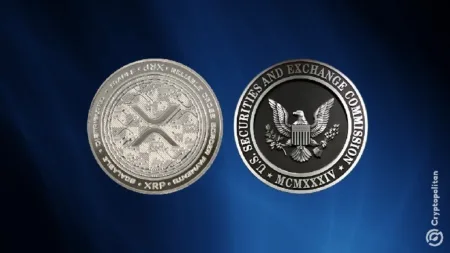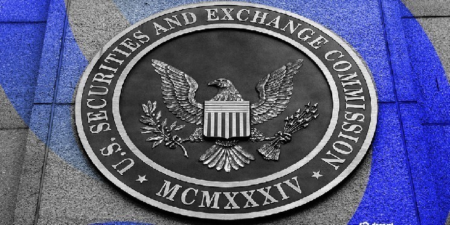This article explores how PayPal and Proof-of-Stake protocols like Tron might have attempted to influence European policy making by commissioning reports, particularly in the context of the upcoming Markets in Crypto-Assets regulation. It also examines the role of the Crypto Carbon Research Institute, which has been active in Crypto-ESG reporting since 2021 and seeks to create a narrative where Proof-of-Stake is greener than Proof-of-Work.
2021: The Beginning
Dutch central banker and blogger Alex DeVries, along with Ulrich Gallersdörfer, Lena Klaaßen, and Christian Stoll, published “The True Cost of Digital Currencies: Exploring Impact Beyond Energy Use,” highlighting bitcoin’s negative impacts beyond energy consumption. Later that year, Gallersdörfer and Stoll as well as Klaaßen founded the CCRI, focusing on contract research, IT services, and sustainability consulting.
2022: PayPal and PoS Protocols’ Engagement
In 2022, CCRI collaborated with South Pole, a company focused on developing comprehensive emission reduction projects and strategies. They published a joint report, which was developed in consultation with PayPal. The report included researching industry methodologies, identifying gaps in existing guidance, and engaging cryptocurrency and Greenhouse Gas accounting stakeholders for feedback. This collaboration informed potential allocation solutions, which were reviewed and synthesized into a proposed framework.
January 2022: CCRI released its first contract work, “Energy Efficiency and Carbon Footprint of PoS Blockchain Protocols,” funded by Avalanche
August 2022: CCRI released a report on the energy efficiency and carbon footprint of the TRON Blockchain, funded by TRON Network Inc.
September 2022: The report, The Merge – Implications on the Electricity Consumption and Carbon Footprint of the Ethereum Network funded by ConsenSys Software Inc.
October 2022: The Energy Efficiency and Carbon Footprint of the Polygon Blockchain report was published, with funding from Polygon Technology.
2023: ESMA Tender and MiCAR Technical Standards
September 2023: The European Markets and Securities Authority issued a tender to develop sustainability standards for crypto-assets, citing evidence that crypto-assets can cause significant harm to the climate and environment, depending on their consensus mechanisms. The contract duration was set at 13-months.
October 2023: ESMA published the second consultation paper on MiCA’s technical standards, requesting specific ESG disclosures from Crypto Asset Service Providers before the 13-month period ended, although the tender has not yet been awarded.
During the consultation period, several entities raised concerns about data availability and reliability in ESMA’s requests from the CASPs. The CCRI supported the proposed Regulatory Technical Standards, citing support inquiries from token issuers and CASPs that indicated a positive impact on transparency regarding the environmental impacts of crypto assets.
Alex DeVries commented on the upcoming MiCA regulations, stating, “MiCA will contain environmental disclosure requirements for all crypto-assets offered by crypto-asset service providers in the EU. ESMA is tasked with working out the details of these requirements and the preliminary requirements can be found here. Whether tokens use proof-of-work or proof-of-stake; these sustainability indicators will have to be disclosed regardless.”
ESMA will likely finalize these requirements in the coming months, making now a bit too soon to comment on this. If the finalized requirements are close to the draft, then the impact will be drastic as all crypto-investors would be confronted with the environmental costs of digital assets. For platforms offering these assets it would be a big challenge to collect and provide all the required information, as only limited tokens currently have live sources of info (e.g. my own Bitcoin
Central banker Alex DeVries also contributed to the discussion, using his blog “Digiconomist” to critique bitcoin’s energy consumption. He referenced his earlier studies with CCRI co-founder Christian Stoll, suggesting that a significant portion of bitcoin mining comes from illegal facilities.
De Vries argued that calculating the network’s energy consumption requires minimal inputs, contrasting with CCRI’s more detailed methodology. He also pointed out that industry research outcomes often deviate from independent analyses, criticizing the business model of CCRI, which relies on contract research.
Requests for comment from Tron, Polygon, Avalanche, ConsenSys, and South Pole were not returned. PayPal asked for more information but did not respond further. Alex DeVries responded, providing insights on MiCA’s environmental disclosure requirements. Lena Klaaßen, co-founder of CCRI, also provided information on the organization’s development, methodologies, and the impact of the upcoming MiCA regulations.
Transparency
The situation presents a complex dilemma. On one hand, De Vries claims the calculations are simple, while CCRI’s more detailed reports suggest otherwise. The potential conflict of interest arises when research is funded by the protocols being evaluated. PayPal’s involvement further complicates the trust issue, given its extensive network. Trusting the numbers published by CASPs is also problematic, as they have a vested interest in presenting favorable data.
Klaaßen emphasized: “Our mission is to provide transparency on the environmental impact of crypto assets. Before founding CCRI in 2021, my co-founders and I started looking into the electricity consumption and carbon footprint of bitcoin as academic researchers. Today, we provide the largest dataset of environmental aspects for over 30 crypto-assets. We rely on both techno-economic models for Proof-of-Work assets and primary data collection for Proof-of-Stake assets to ensure a high level of accuracy.”
When looking at the data provided, continuous updates are necessary if material changes occur. So far, CCRI uses data from Cambridge Bitcoin Electricity Consumption Index dating back to January 2022, which does not adequately reflect the changes in the industry.
German company DLC GmbH’s Crypto Risk Metrics also offers the required MiCAR ESG data points. When questioned about their perspective on this matter, a spokesperson stressed the complexity of accurate energy intensity calculations while also highlighting their independence from blockchain protocol payments. They also noted that the company adheres IDW 951 standards and the regulated companies using their product have been audited by multiple Big 4 firms without any concerns over the data.
The interplay between financial entities like PayPal, PoS protocols, and regulatory bodies highlights the complexities in ensuring transparency and sustainability in the crypto sector. As MiCA regulations take shape, the influence of these stakeholders will continue to grow, necessitating careful scrutiny of methodologies and potential conflicts of interest. This shows the need for robust, independent methodologies and transparent reporting to effectively manage new regulations.
Read the full article here








